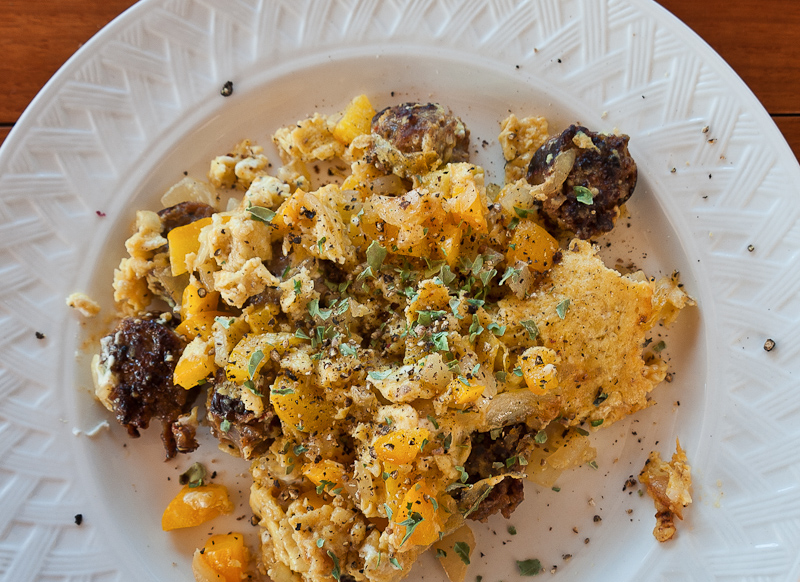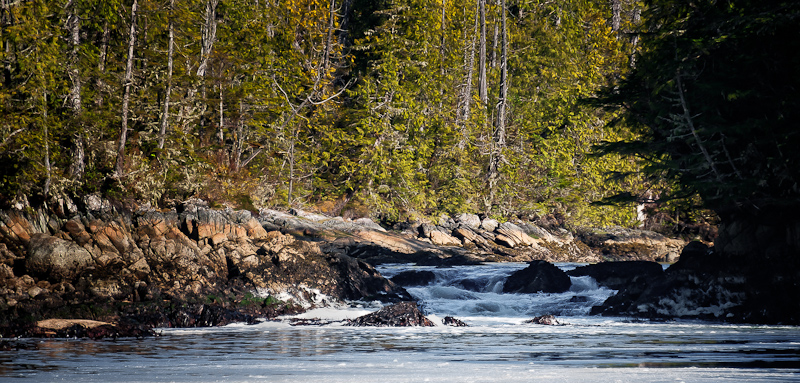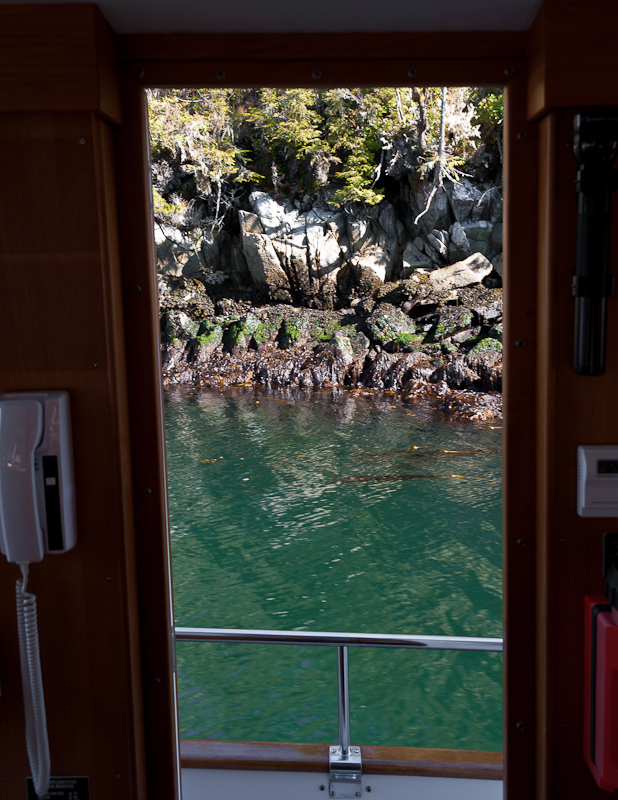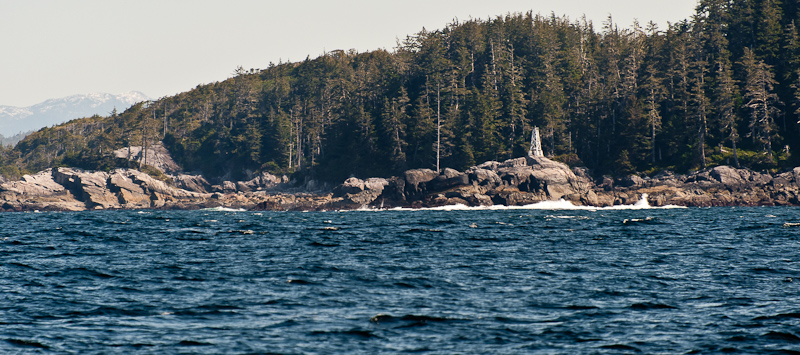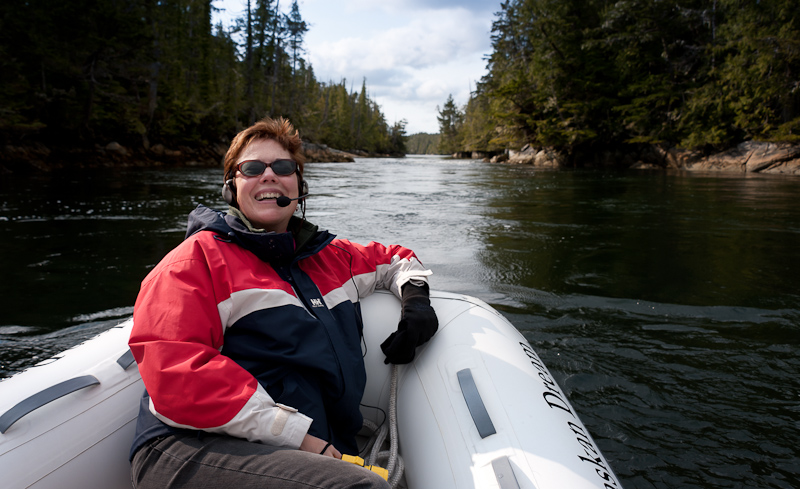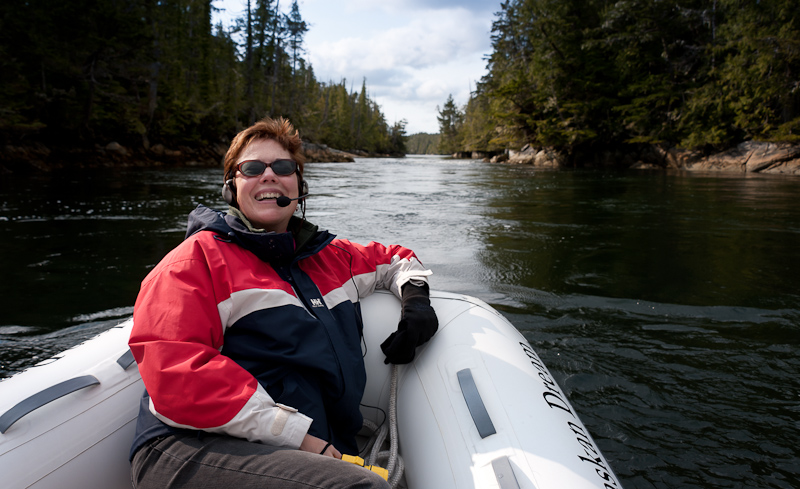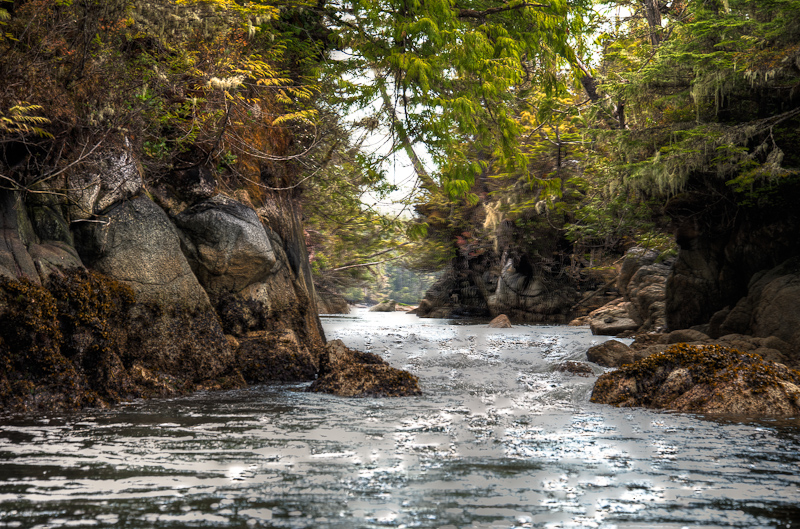Fly Basin to Ahclakerho Islands
/Fly Basin to Ahclakerho Islands
Our neighbor last night left about a half hour before us. We weighed anchor and began our trip at 7:57am in order to arrive at the narrow Ahclakerho Channel at low slack about 10:00am. The channel looks narrow on the chart and there are some rocks that line the fairway, but we found the Nobeltec charts to be spot on and the trip was an easy passage in beautiful sun.
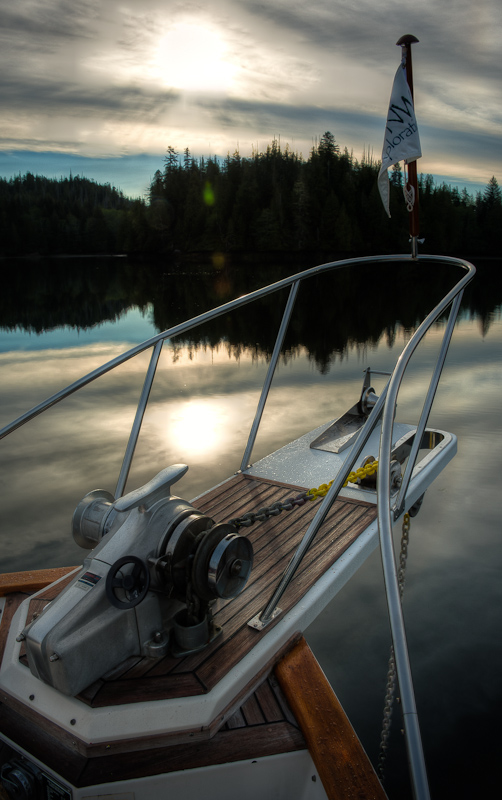
Beautiful sunrise at anchor
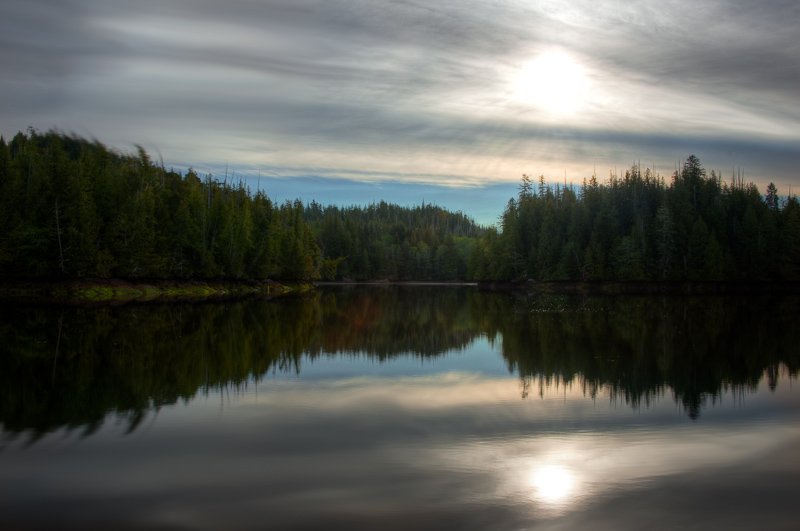
We enjoyed a calm and still night at anchor
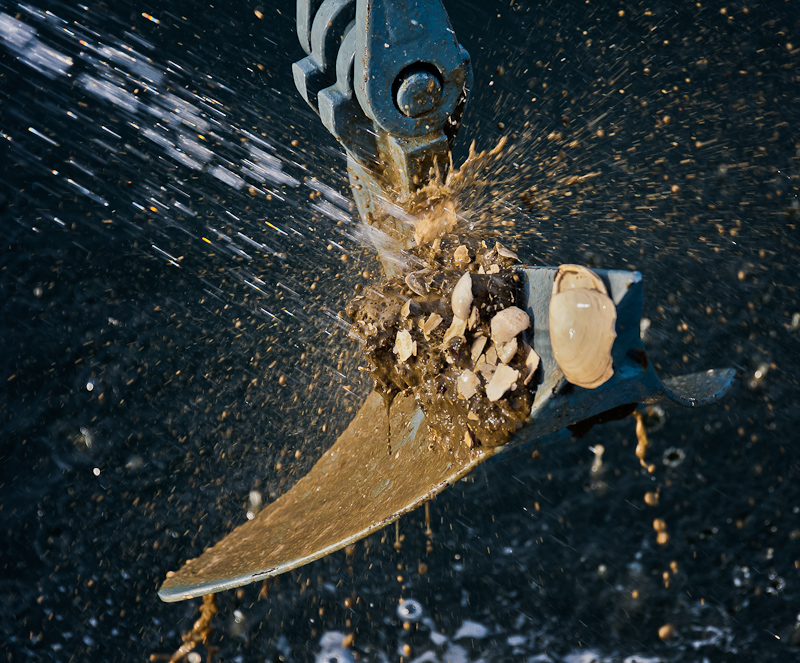
Sticky mud and shells make for good holding
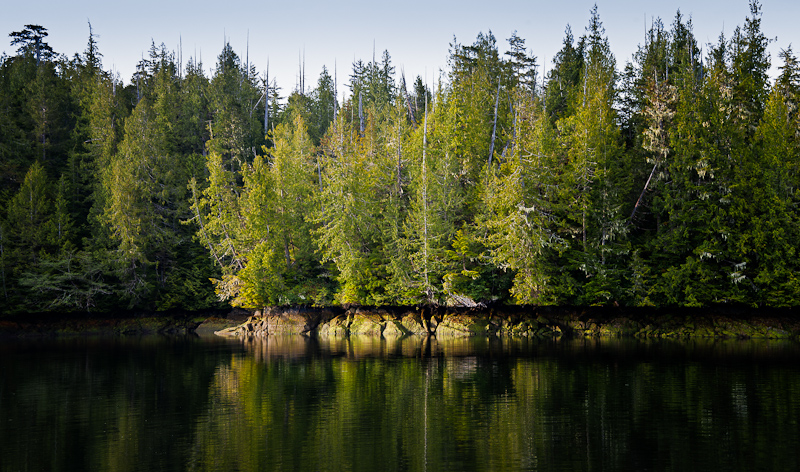
Fly Basin is well protected and we enjoyed a calm night

There is a reason power boats got the nickname “stinkpots”

You never are in doubt where the high tide stops. The trees look as if they are trimmed with a laser.

These are the views views you see cruising nowhere else
Karen had read about some pictograph in the channel across from one of the small islets. I was able to a get a photo, Karen will have to wait for the return to see it. I find it difficult, at best, to spot these ancient symbols. Often faded, they seldom look like anything you expect. Add to that, the fact that the rocks themselves are emblazoned with marks from Mother Nature, and it’s no wonder we bat about 50/50 in spotting these. I got a picture, and when we later looked at the blow up of the pictograph, it was a crazy bug with eyes and a mouth.
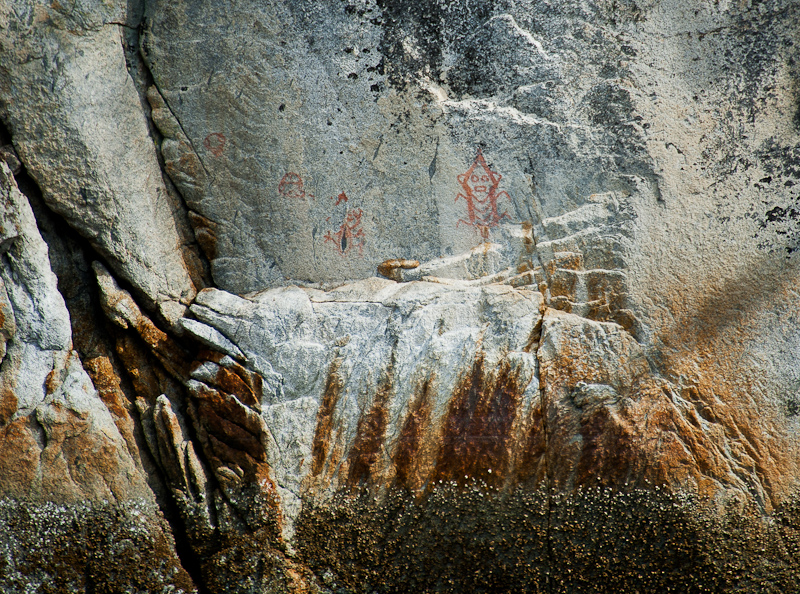
The anchorage in the small “V” shaped notch at the eastern end of the larger of the two Ahclakerho Islands is cozy but not cramped. Because of the shoaling at the northwest end and the marked (but not seen) rock, we did what most people do and set a stern line to the south shore. We have not done a stern tie in a couple of years; add to that a new (to us) boat with different equipment than we are used to, and it took us about an hour to do the “stern tie dance.”
We set the anchor in about 15 feet of water (rocky bottom!) on a plus 2 foot tide about 85 yards from the rocks. From there we set the anchor at the 50 foot mark on the rode and then proceeded to pay out a total of 250 foot of chain. That allowed Alaskan Dream to sit 30 yards from shore in 33 feet of water.
It was low tide ant only one foot above low water, so Karen had to climb the barnacle-encrusted and slimy, slippery rocks to find a suitable place to run our stern line. We were so close to shore that I just rowed us to and from the boat in the dinghy rather than starting the engine. Our stern line was nicely long enough to get the job done, and we were finally snug in the cove.
The bonus to this anchorage is the great Kayaking to be had. At first it only looks OK, but once you get out and start to explore the north shore line of the large island, you’ll find some special small spots and passages that are a kayaker’s delight.
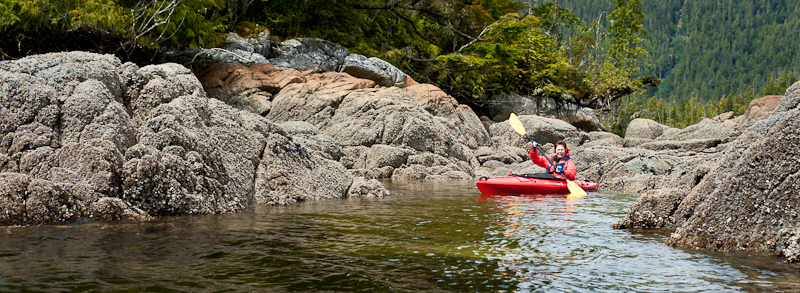
Karen loves to explore what she calls “Kayak Garages”
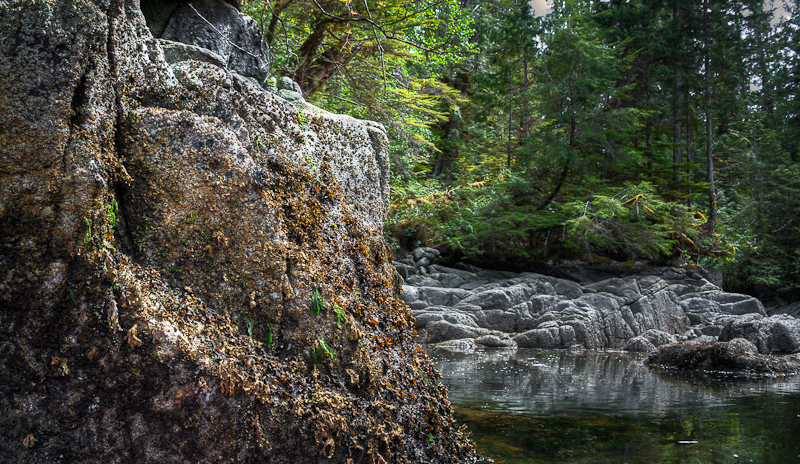
I love all the different textures and colors you find as you look closely from the cockpit of the kayak
In addition, on the west end of the “v” anchorage you’ll find a drying pass that, at high water can be paddled up for about 150 yards. From there you turn around and get a great photo of your boat with snowcapped (it was May 20th) mountains in the far distance.
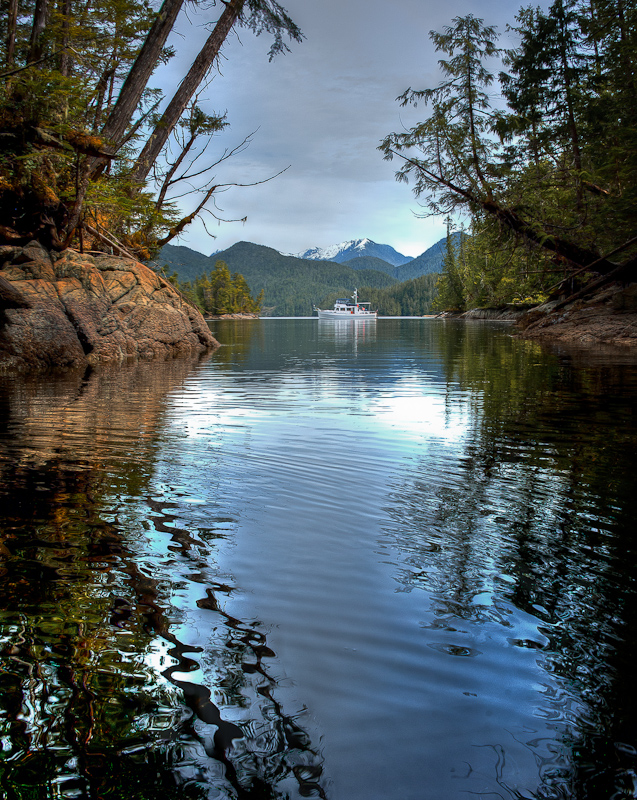
The view from the kayaks is not to be missed
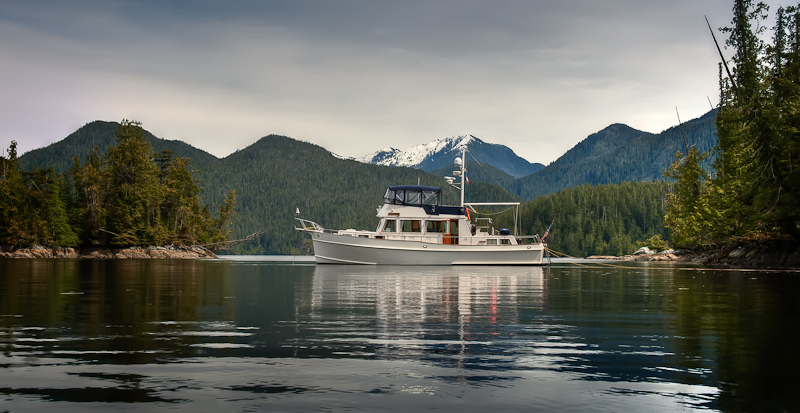
Alaskan Dream framed by the snow capped mountains
Karen and I spent about 2 hours going in and out of every little nook and cranny we could find. Occasionally we were join by the local seals who were as least as interested in us as we they.
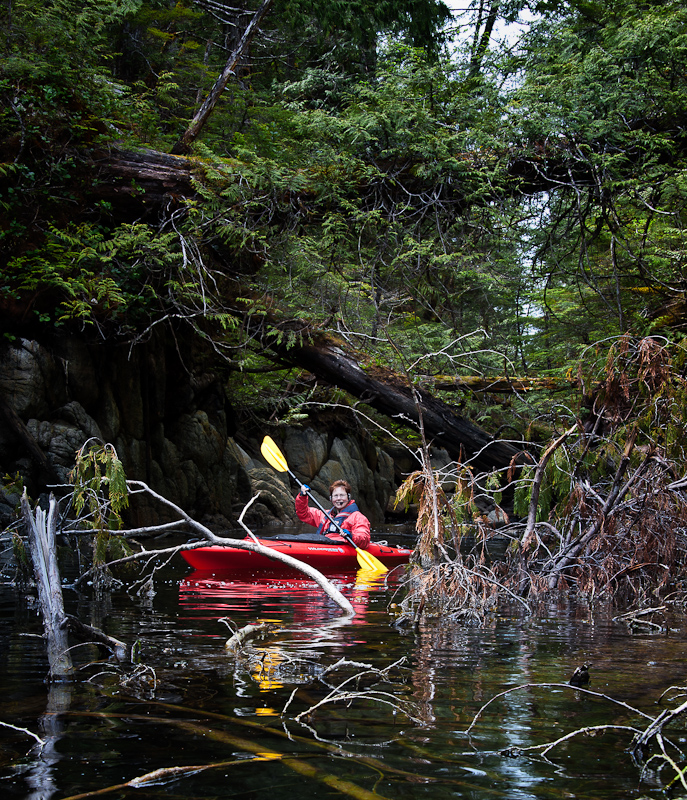
The end of the little drying inlet was messy but still a fun paddle
There were also these triangular (like baby conch) shells everywhere with some sort of sea life inside. We have not seen these before but they were in abundance, along with lots of big clams and mussels.
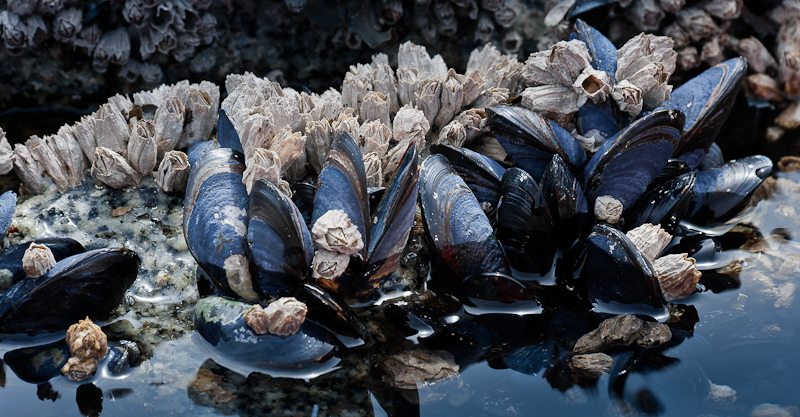
An abundance of mussels, but it's the wrong time of the year to harvest them
Dinner selection was driven by chef Bob, who wanted “comfort food” and thus made a fusilli gorgonzola with peppers, onions and kielbasa. After dinner, we decided to check out Broad Cove by dinghy as an alternate anchorage. It was about a 3 mile ride, and it was nice, but not as cozy as where we already were. The dinghy on Alaskan Dream is so nice, very stable, and with an electric start, so easy to get going. It also gets up to 14kts, which is nice for those times when kayaking doesn’t cut it!
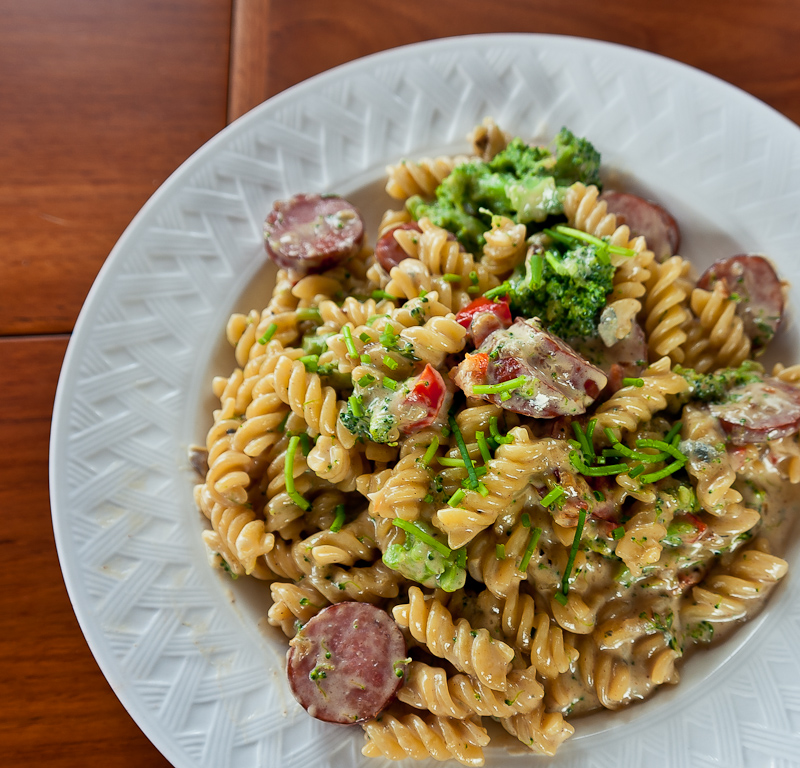
Dinner aboard Alaskan Dream
We were the only pleasure boat in the area, but we did see a fishing boat tending his prawn pots.
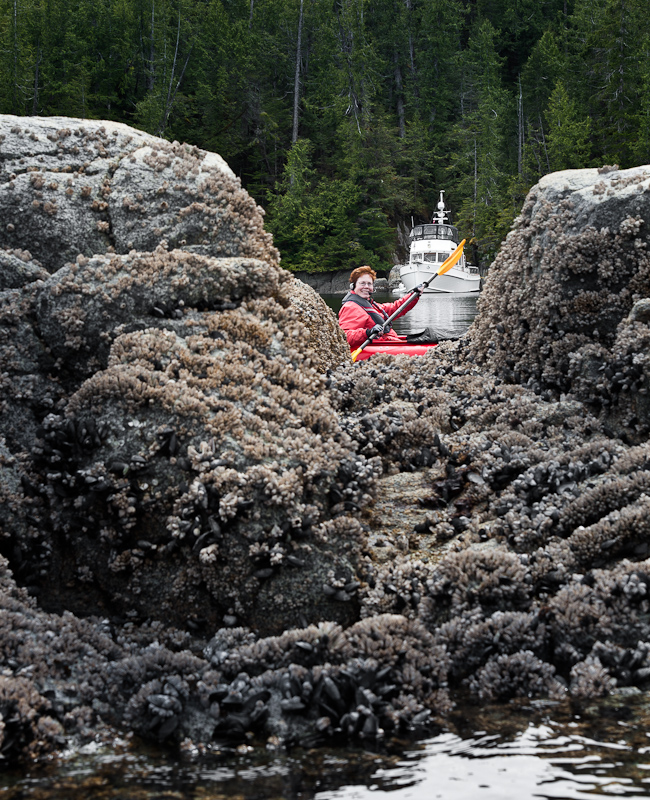
Just us and Mother Nature. Adventure the way we like it.


